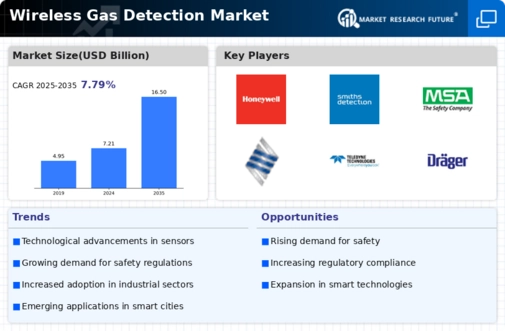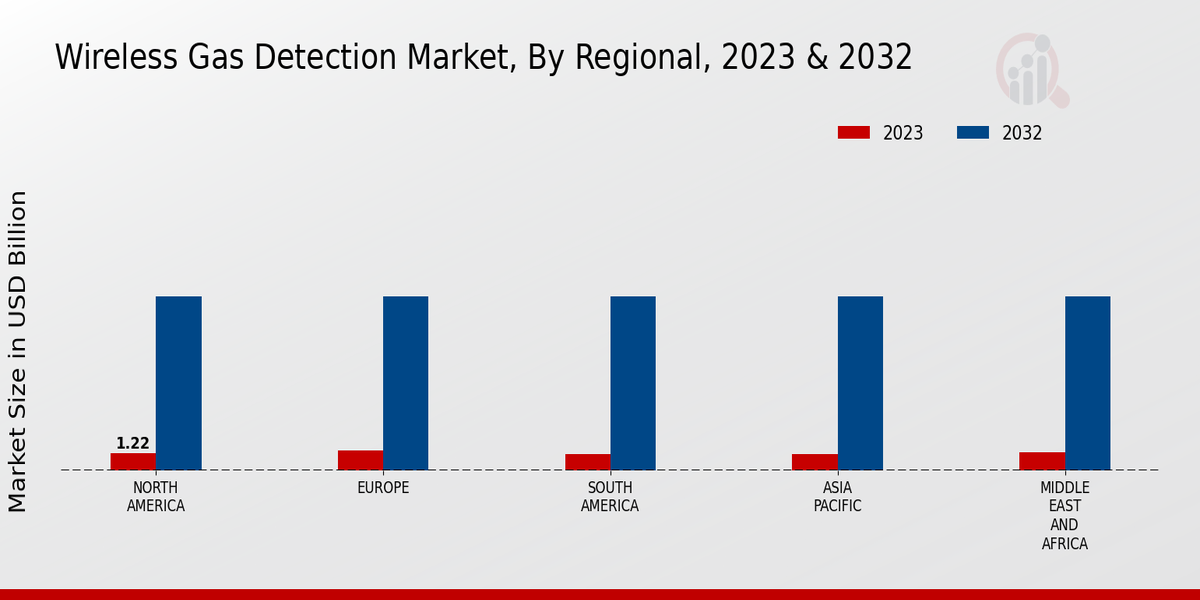Technological Advancements
Technological advancements in wireless gas detection systems are significantly influencing the Global Wireless Gas Detection Market Industry. Innovations such as the integration of Internet of Things (IoT) capabilities and enhanced sensor technologies are improving the accuracy and reliability of gas detection. These advancements allow for real-time monitoring and data analysis, which can lead to quicker response times in hazardous situations. As a result, the market is projected to grow from 7.21 USD Billion in 2024 to 16.5 USD Billion by 2035, reflecting a compound annual growth rate (CAGR) of 7.8% from 2025 to 2035.
Increasing Safety Regulations
The Global Wireless Gas Detection Market Industry is experiencing growth due to the increasing implementation of stringent safety regulations across various sectors, including oil and gas, mining, and manufacturing. Governments worldwide are mandating the use of advanced gas detection systems to ensure worker safety and environmental protection. For instance, regulations from the Occupational Safety and Health Administration (OSHA) in the United States emphasize the need for effective gas monitoring systems. This regulatory push is likely to drive the market, as organizations invest in wireless gas detection technologies to comply with safety standards and avoid penalties.
Chart: Market Growth Projections
The Global Wireless Gas Detection Market Industry is projected to experience substantial growth over the next decade. The market is expected to reach 7.21 USD Billion in 2024 and is forecasted to grow to 16.5 USD Billion by 2035. This growth trajectory indicates a compound annual growth rate (CAGR) of 7.8% from 2025 to 2035, reflecting the increasing adoption of wireless gas detection technologies across various sectors. The following chart illustrates these projections, highlighting the anticipated expansion of the market.
Growing Demand in Emerging Economies
Emerging economies are witnessing a surge in industrial activities, which is propelling the demand for gas detection systems. The Global Wireless Gas Detection Market Industry is likely to benefit from this trend, as countries such as India and Brazil are investing heavily in infrastructure and industrial development. These nations are increasingly adopting wireless gas detection technologies to enhance safety measures in their burgeoning industrial sectors. The expansion of industries such as petrochemicals and manufacturing in these regions is expected to contribute significantly to market growth, aligning with the global trend of prioritizing safety and environmental sustainability.
Rising Awareness of Environmental Concerns
The rising awareness of environmental concerns is driving the Global Wireless Gas Detection Market Industry. As industries face pressure to minimize their environmental impact, the need for effective gas detection systems becomes paramount. Wireless technologies enable continuous monitoring of emissions, allowing companies to adhere to environmental regulations and reduce their carbon footprint. This trend is particularly evident in sectors like oil and gas, where companies are investing in advanced gas detection solutions to monitor leaks and emissions. The increasing focus on sustainability is likely to propel market growth as organizations seek to implement responsible practices.



















